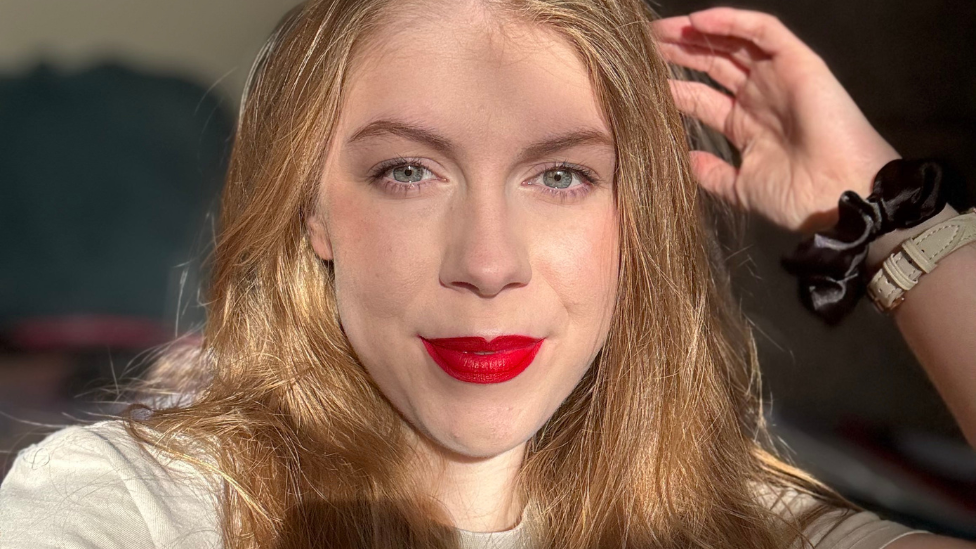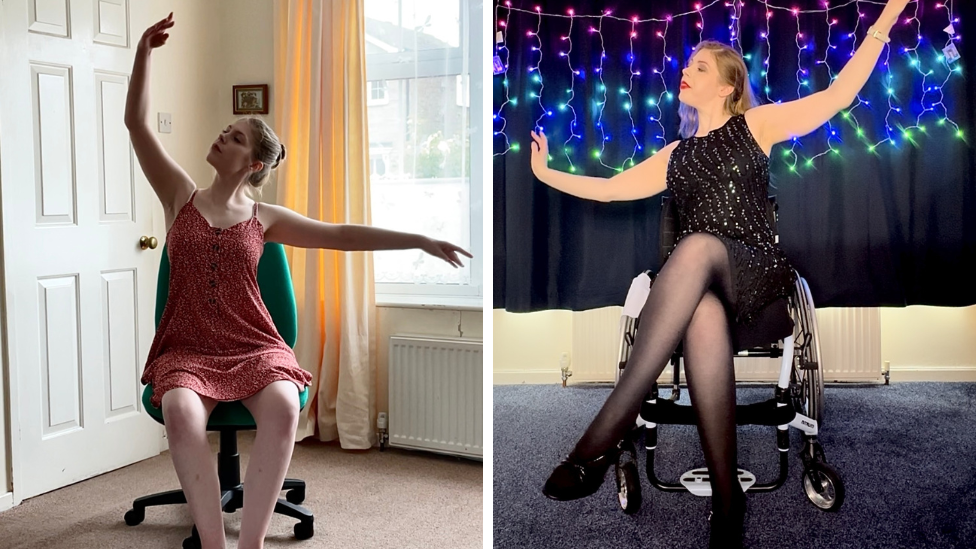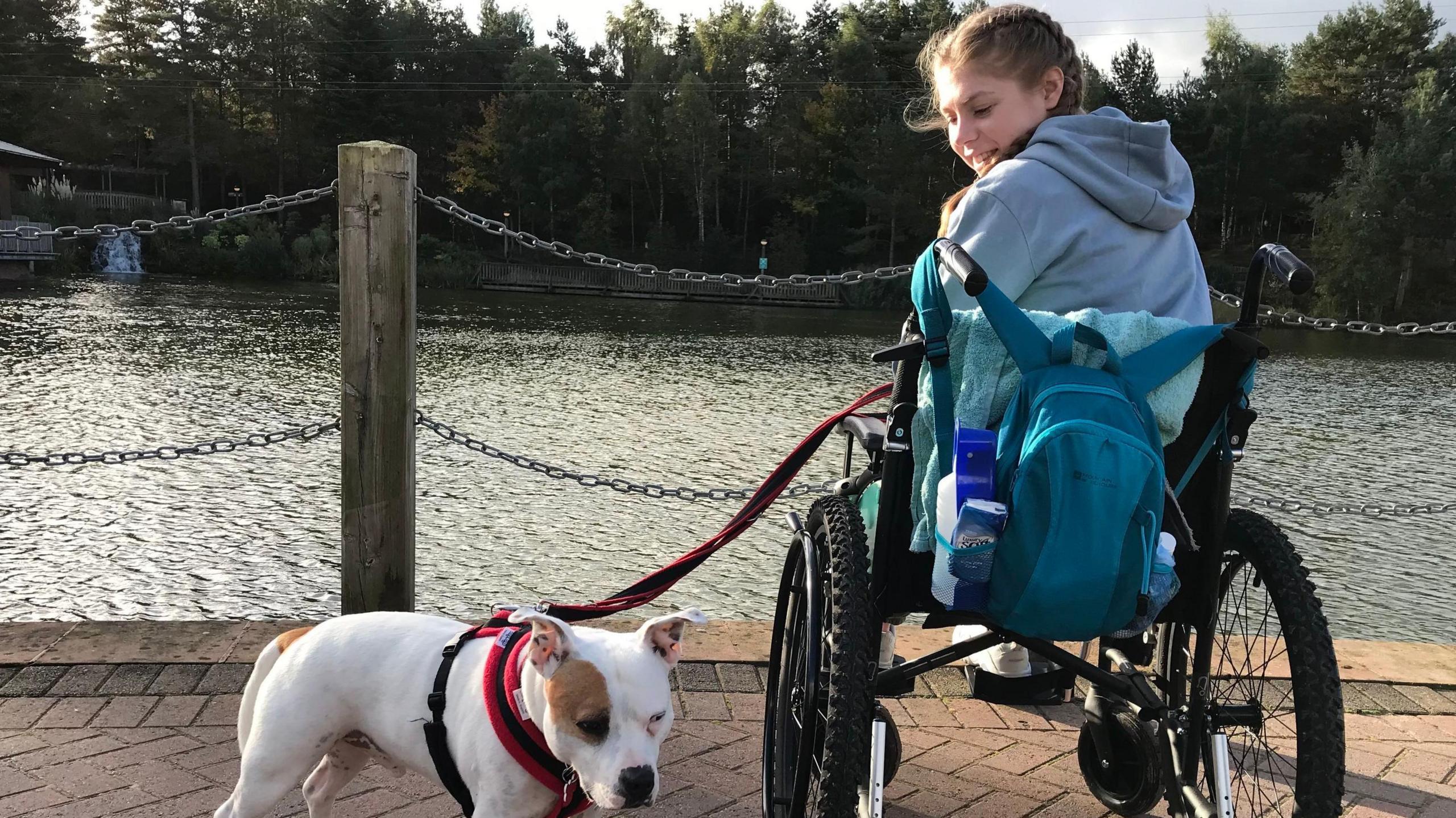Wheelchair user adapts Strictly dance routines

Fay Crockett says she would love to see a wheelchair user compete in the Strictly ballroom
- Published
A wheelchair user has been adapting dance routines from Strictly Come Dancing to make them wheelchair friendly, gaining an online following.
Fay Crockett, a dance teacher from York, began dancing at an early age and was diagnosed with myalgic encephalomyelitis (ME) in 2017 when she was 16.
She started adapting routines performed on the show in 2023 and shared them on her TikTok page, with videos attracting thousands of views and comments from Strictly dancers.
Ms Crockett said the reaction to her routines had taken her aback, adding she would love to see a wheelchair user compete in the Strictly ballroom.
"I never expected the response I received," Ms Crockett, 25, said.
"My videos were liked, shared, and commented on by celebrities, professional dancers, judges and choreographers."
Her videos led to her being featured on Strictly's behind-the-scenes programme It Takes Two.

Ms Crockett began adapting Strictly Come Dancing routines for wheelchair users in 2023
Ms Crockett began using a wheelchair after her ME diagnosis and said she initially had been "incredibly reluctant" to accept she needed to use one.
"It quickly became clear it was my only option if I wanted to leave the house," she said.
"There were the constant stares, the occasional judgmental comments, and the deep fear of being seen by anyone I knew – a reflection of my own, very human, internalised ableism."
ME, also known as chronic fatigue syndrome (CFS), is a neurological disease which affects about 390,000 people in the UK.
It led her to become bedbound for a time, with Ms Crockett then starting to realise dance could "become something more" for her.
"Whilst I was stuck in bed I used to choreograph dances in my head to every piece of music I heard," she said.
"From that moment, I knew that if I ever got the chance to dance again, I would do everything I could to make it happen."

Ms Crockett was diagnosed with ME as a teenager
Ms Crockett later attempted to return to in-person ballet classes, but the journey to the studio took "too much of a toll" on her body, forcing her to stop.
She saw professional dancers hosting online classes during the Covid pandemic and realised she could dance from home instead.
She later achieved several dance qualifications, started to teach weekly online classes and began to adapt Strictly routines.
"I take note of which dances or styles might work best, avoiding routines that rely heavily on lifts or long periods in hold," she said.
Routines with a lot of upper-body movement usually "catch my eye", she said.
She then breaks the dance down into different moves and records a video in one take.
"I never imagined this would become part of my life, but my wheelchair has come to represent freedom, especially when it allows me to do things I love like dance," she added.
"Dance will always look different for me, but it's mine again. That, to me, is everything."
Get in touch
Tell us which stories we should cover in Yorkshire
Listen to highlights from North Yorkshire on BBC Sounds, catch up with the latest episode of Look North.
Related topics
Similar stories
- Published28 July
